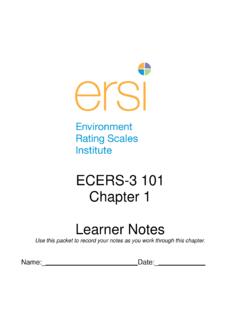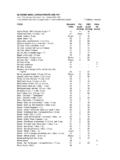Transcription of Foods that contain phosphate - Queensland Health
1 This is a consensus document from Queensland Health Dietitian/ Nutritionists. Updated: March 2012 Disclaimer: Review: March 2014 Foods that contain phosphate (PO4) Below is a detailed list of Foods that contain phosphate . Use this as a guide to help you stay within your allowance. Your Dietitian will explain its importance and how many serves from each group you need to meet your requirements. Some of these Foods may be high in potassium and high in salt, and they should be eaten in the amounts recommended by your Dietitian. Your phosphate allowance is approximately 32 mmols per day.
2 (1mmol = 31mg phosphate ) Breads and Cereals Have at least 5 serves of breads and cereals per day. Choose lower phosphate options (1 point or less per serve). Bread Amount phosphate points (mmol) Bread, wholemeal, flat- lebanese 80g (1 lebanese) 4 English Muffin, fruit 67g (1 muffin) 4 Crumpet, wholemeal (toasted) 50g (1 round) 3 English Muffin, white 67g (1 muffin) 3 Bread, Pumpernickel 47g (1 slice) 3 Bread, white, Lebanese 80g (1 lebanese) 3 Bread roll wholemeal, mixed grain 1 medium roll 3 Bread, white, Pita 90g (2 pita/ pocket) 3 Bread, wholemeal, flat - Pita 45g (1 pita) 2 Chapati 1 chapati (35g) 2 Crumpet, white 47g (1 round) 2 Bread wholemeal or multigrain 40g (1 slice) 2 Bread, Naan 46g (1 small slice) 2 Bread, dark rye 40g (1 slice) 2 Bread, white 40g (1 slice)
3 1 Bread, fruit loaf 40g (1 slice) 1 Breakfast cereals Amount phosphate points (mmol) All bran with fruit and nuts 1 cup 28 All Bran 1 cup 15 Muesli, toasted 1 cup 10 Oat bran with fruit 1 cup 10 Oats (raw) cup 6 Just Right 1 cup 6 Muesli, untoasted 1 cup 6 Sultana bran 1 cup 4 Wheat bran flakes 1 cup 4 Guardian with psyllium 1 cup 3 Weet-bix, Vita-brits 2 biscuits 3 Oat flakes 1 cup 2 Special K 1 cup 2 Porridge (cooked) cup 2 Coco Pops 1 cup 2 This is a consensus document from Queensland Health Dietitian/ Nutritionists. Updated: March 2012 Disclaimer: Review: March 2014 Nutrigrain 1 cup 2 Cereal bars k- time, fruit filled 1 bar 1 Rice porridge (Congee) 1 cup 1 Rice Bubbles / Puffed / Popped Rice 1 cup 1 Puffed Wheat 1 cup 1 Semolina (cooked) 1 cup 1 Cornflakes 1 cup 0 Rice, Pasta and Noodles Amount phosphate points (mmol) Rice, brown (cooked) cup 4 Barley, pearl (boiled) cup 3 Pasta (cooked) cup 2 Rice, white (cooked) cup 1 Couscous (cooked) cup 0 Polenta (cooked)
4 Cup 0 Rice noodles cup 0 Biscuits Amount phosphate points (mmol) Rice cake 2 slices 2 Salada, wholemeal 2 biscuits 2 Rye crispbread 2 crispbread 2 Cheese flavoured 4 biscuits 1 Wholemeal crispbread 2 crispbread 1 Oatmeal 2 biscuits 1 Water cracker, plain 2 biscuits 0 Plain biscuit milk arrowroot 2 biscuits 0 Salada, plain 2 biscuits 0 Flours Amount phosphate points (mmol) Flour, white, self raising cup 15 Flour, soy cup 13 Flour, wholemeal, plain cup 5 Flour, rice cup 5 Flour, white, plain cup 3 Flour, cornflour 2 tspn 0 Flour, arrowroot cup 0 Dairy Products Have at least 2 serves of reduced fat dairy products per day.
5 Choose lower phosphate options where possible (4 points or less per serve). Dairy products Milk Amount phosphate points (mmol) Condensed milk 125mls ( cup) 12 Milk evaporated 125mls 10 This is a consensus document from Queensland Health Dietitian/ Nutritionists. Updated: March 2012 Disclaimer: Review: March 2014 Buttermilk, cultured 2% fat 125mls 5 Milk full/low fat /skim/flav/soy 125mls 4 Milk (from powder) all 125mls 4 Rice Milk 125mls 3 Creamed Rice 125mls 2 Cheese Amount phosphate points (mmol) Cheese Edam, reduced fat cheddar20g (1 slices) 4 Cheese Swiss, Cheddar 20g (1 slices) 4 Cheese Colby 20g (1 slices) 3 Cheese Camembert, Brie, Blue vein 20g 2 Cheese Ricotta, Cottage 2 tablespoons 2 Cheese Parmesan 1 tablespoon (7g) 2 Cheese Cream 2 teaspoons Desserts Amount phosphate points (mmol)
6 Yoghurt plain, vanilla, fruit, frozen 100g 5 Yoghurt frozen, soft serve 1 single cone 5 Custard regular or low fat 125mls ( cup) 4 Fruche 100g 4 Ice cream regular or low fat cup 3 Creamed Rice 125mls ( cup) 2 Meat and Meat Alternatives Your dietitian will discuss how many meat serves you need and appropriate options for you to meet your requirements. Choose good quality lean meats and lower phosphate options where possible. Meat Products (cooked) Amount phosphate points (mmol) Offal brains, kidney (all kinds) 1 cup 14 Bacon 2 rasher (60g) 10 Beef, Lamb, Veal, Pork, Chicken 100g 7-9 Game meat Kangaroo/ Rabbit 100g 7-9 Hamburger Patty, Frozen, Grilled 1 patty (75g) 7 Offal tripe 1 cup 4 Sausage, pork or beef 1 sausage (58g) 4 Beef, Corned, Canned 100g 4 Ham, Deli-sliced 2 thin slices (40g) 4 Turkey sliced 2 thin slices (40g) 4 Salami 2 slices (40g) 3 Offal chicken liver 1 liver (18g) 2 Seafood (cooked) Amount phosphate points (mmol)
7 Snapper 100g 17 Sardine, canned in oil 1 can (120g) 15 Scallops 8 scallops (120g) 13 This is a consensus document from Queensland Health Dietitian/ Nutritionists. Updated: March 2012 Disclaimer: Review: March 2014 Flathead 100g 12 Trout 100g 11 Prawn, King 6 (100g)
8 10 Tuna 100g 10 Salmon 100g 9 Cod, smoked 100g 9 Oysters 6 9 Flake 100g 8 Salmon, canned in water 95g tin 8 Crab 100g 7 Perch 100g 6 Tuna, canned in water 1 can (100g) 5 Fish Finger 2 fingers (50g) 3 Meat Alternatives Amount phosphate points (mmol) Egg 2 medium 6 Cashews, Almonds dry roasted 1/3 cup 7 Tofu (Bean Curd) (raw)
9 100g 5 Walnuts, Peanuts 1/3 cup 5 Pecan Nuts, Hazelnuts 1/3 cup 4 Sesame/Sunflower Seeds 1 Tablespoon 3 Macadamia Nuts 1/3 cup 3 Legumes, all kinds (cooked) cup 2-3 Extra These are treat Foods and most are high in fat, sugar and/or salt, therefore should be limited. Choose lower phosphate options where possible. Miscellaneous Amount phosphate points (mmol) Meat Pie individual size 1 serve (175g) 8 Cheese / Plain Scone 1 scone (34 g) 5 Sausage Roll Individual Size 1 serve (140g) 5 Smith s Twisties cheese flavour 50g 5 Peanut Butter 1 tablespoon 4 Popcorn (unsalted) 50g 3 Chocolate (milk) 1 row (30g) 3 Vegemite 1 teaspoon 2 Pretzels 45g 2 Smith s flavoured potato crisp 50g 2 Chocolate (white) 1 row (30g) 2 Curry Powder 10g 1 White Sauce 25mls 1 Mustard Sauce 30g 1 Potato Chips (Hot Fries) 12 chips (48g) 1 Curry Paste 25g 1 Tomato Sauce 100mls 1 This is a consensus document from Queensland Health Dietitian/ Nutritionists.
10 Updated: March 2012 Disclaimer: Review: March 2014 Nutella 1 tablespoon 1 Dip, Cream cheese based 1 Tablespoon,20g1 Sour Cream 3 Tablespoon 1 Ice confection, fruit stick 70g (1 serve) 0 Horseradish Cream 1 Tablespoon 0 Cakes, Pastries, Biscuits, Dessert Amount phosphate points (mmol) Pikelet 1 pikelet (35g) 5 Scone 1 scone (35g) 5 Chocolate cake 1 slice (40g) 4 Sponge cake 1 slice (40g) 4 Carrot cake 1 slice (40g) 3 Cheesecake (plain) + biscuit base 1 slice (60g) 3 Bun, iced 1 bun (65g)



















